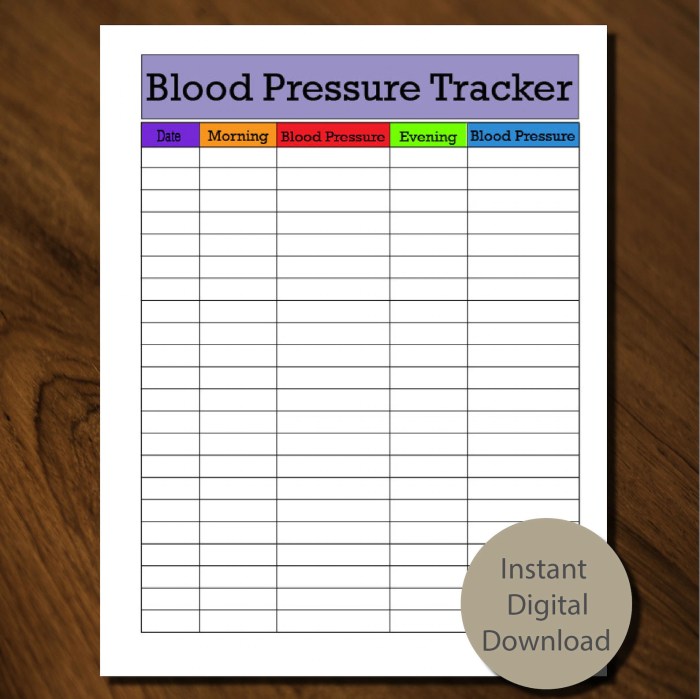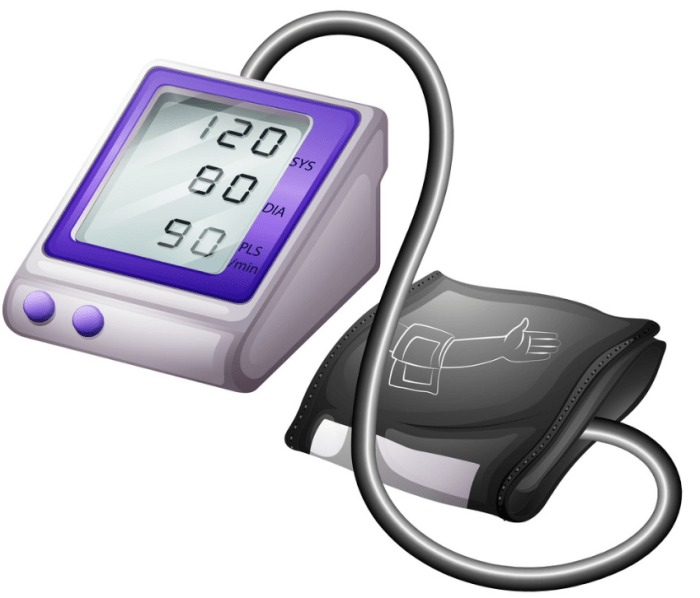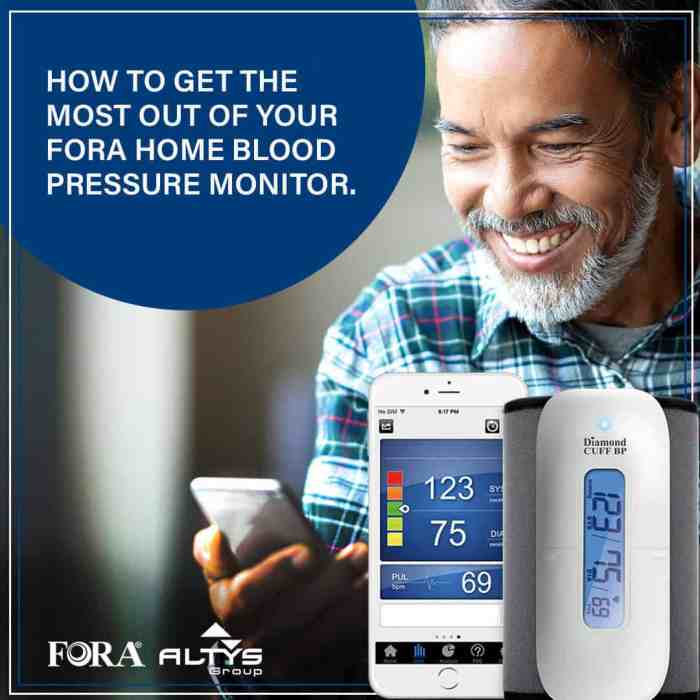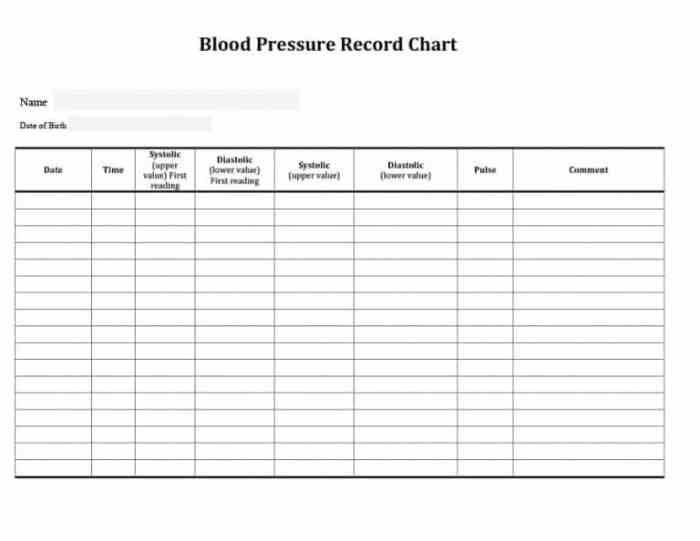Chapter 16:7 Measuring and Recording Blood Pressure delves into the crucial aspects of blood pressure measurement and recording, providing a comprehensive understanding of this vital health parameter.
Blood pressure, a measure of the force exerted by blood against the walls of blood vessels, is a key indicator of cardiovascular health. Accurate measurement and recording of blood pressure are essential for proper diagnosis, monitoring, and management of hypertension and other cardiovascular conditions.
1. Measuring Blood Pressure
Blood pressure is a vital sign that measures the force exerted by blood against the walls of blood vessels. Measuring blood pressure is an important part of assessing cardiovascular health and detecting hypertension.
Methods for Measuring Blood Pressure
- Auscultation:The traditional method using a sphygmomanometer and stethoscope to listen for Korotkoff sounds.
- Oscillometry:An automated method that measures pressure fluctuations in an inflatable cuff.
- Tonometry:A newer method that uses a sensor to measure pressure directly in an artery.
Advantages and Disadvantages of Each Method
| Method | Advantages | Disadvantages |
|---|---|---|
| Auscultation | – Accurate
|
– Requires training and skill
|
| Oscillometry | – Automated
|
– Less accurate than auscultation
|
| Tonometry | – Most accurate
|
– Invasive
|
Step-by-Step Guide to Measuring Blood Pressure Using a Sphygmomanometer
- Position the patient comfortably with their arm supported at heart level.
- Place the cuff snugly on the upper arm, about 2-3 cm above the antecubital crease.
- Inflate the cuff until the brachial artery is occluded (no pulse palpable).
- Slowly release the pressure while listening for Korotkoff sounds through the stethoscope.
- Record the systolic (first sound) and diastolic (fifth sound) pressures.
2. Recording Blood Pressure: Chapter 16:7 Measuring And Recording Blood Pressure

Accurate recording of blood pressure is essential for monitoring cardiovascular health and managing hypertension. Blood pressure can be recorded using various methods, each with its advantages and disadvantages.
Importance of Accurate Recording
- Ensures accurate diagnosis and treatment of hypertension.
- Facilitates monitoring of blood pressure over time.
- Allows for comparisons between different individuals and populations.
Methods for Recording Blood Pressure
- Paper Charts:Traditional method of recording blood pressure measurements on paper.
- Electronic Records:Digital method of recording blood pressure measurements using electronic devices.
- Mobile Apps:Applications that allow patients to record and track their blood pressure measurements using their smartphones.
Tips for Ensuring Accurate Blood Pressure Recordings
- Use a calibrated sphygmomanometer.
- Position the patient correctly and support their arm.
- Inflate the cuff to the appropriate pressure.
- Listen carefully for Korotkoff sounds.
- Record the measurements accurately.
3. Factors Affecting Blood Pressure Measurements

Blood pressure measurements can be affected by various factors, including age, sex, race, activity level, and medications. Understanding these factors is important for interpreting blood pressure measurements accurately.
Age
Blood pressure tends to increase with age due to stiffening of arteries and reduced elasticity.
Sex
Men typically have higher blood pressure than women before menopause, but after menopause, women’s blood pressure often exceeds men’s.
Race
African Americans have higher rates of hypertension than other racial groups.
Activity Level
Regular physical activity can lower blood pressure.
Medications, Chapter 16:7 measuring and recording blood pressure
Certain medications, such as diuretics and beta-blockers, can affect blood pressure.
Minimizing the Effects of Factors on Blood Pressure Measurements
- Measure blood pressure at rest.
- Avoid caffeine and alcohol before measuring blood pressure.
- Use the same arm and position each time.
- Take multiple readings and average them.
4. Interpreting Blood Pressure Measurements

Blood pressure measurements are classified into different categories based on the level of pressure. Understanding these categories is essential for assessing cardiovascular risk.
Categories of Blood Pressure
| Category | Systolic Pressure (mmHg) | Diastolic Pressure (mmHg) |
|---|---|---|
| Normal | <120 | <80 |
| Elevated | 120-129 | <80 |
| Stage 1 Hypertension | 130-139 | 80-89 |
| Stage 2 Hypertension | 140-159 | 90-99 |
| Hypertensive Crisis | >180 | >120 |
Implications of Different Blood Pressure Readings
- Normal:Low risk of cardiovascular events.
- Elevated:Increased risk of cardiovascular events, requires monitoring.
- Hypertension:Significant risk of cardiovascular events, requires treatment.
- Hypertensive Crisis:Medical emergency, requires immediate treatment.
Guidelines for Interpreting Blood Pressure Measurements in Different Populations
Blood pressure guidelines may vary for different populations, such as the elderly, pregnant women, and children. It is important to consult with a healthcare professional for specific guidelines.
5. Blood Pressure Monitoring

Regular blood pressure monitoring is crucial for detecting and managing hypertension. There are various types of blood pressure monitoring devices available, each with its advantages and disadvantages.
Importance of Regular Blood Pressure Monitoring
- Detects hypertension early.
- Monitors the effectiveness of treatment.
- Identifies individuals at risk of cardiovascular events.
Types of Blood Pressure Monitoring Devices
- Home Monitors:Used for self-monitoring blood pressure at home.
- Ambulatory Blood Pressure Monitors:Worn for 24 hours to provide a more accurate assessment of blood pressure over time.
Choosing the Right Blood Pressure Monitoring Device
- Consider accuracy, ease of use, and cost.
- Select a device that is appropriate for the patient’s needs.
- Consult with a healthcare professional for guidance.
Clarifying Questions
What are the different methods of measuring blood pressure?
Blood pressure can be measured using auscultation (listening to sounds through a stethoscope), oscillometry (detecting oscillations in an inflatable cuff), or tonometry (using a sensor to measure pressure directly).
How do I ensure accurate blood pressure measurements?
Accurate measurements require using the correct cuff size, proper positioning, and avoiding factors that can influence readings, such as smoking, caffeine, or exercise.
What are the implications of different blood pressure readings?
Blood pressure readings are classified into normal, elevated, and high blood pressure categories. Elevated and high blood pressure readings indicate an increased risk of cardiovascular events and require medical attention.